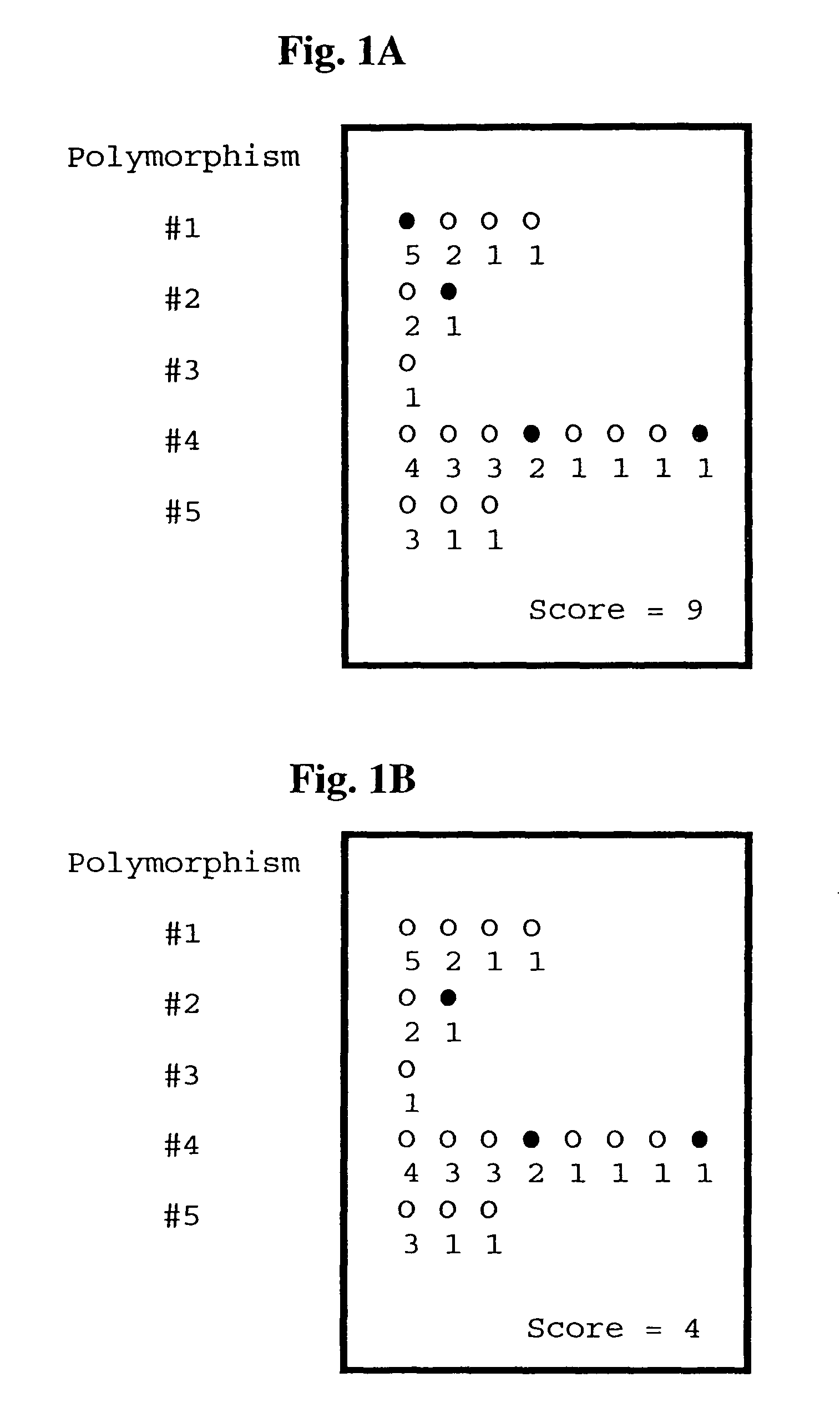Kits and methods for assessing skin health
a skin health and kit technology, applied in the field of kit and method for assessing skin health, can solve the problems of not being able to predict the likelihood of human development, degrade skin health and appearance, etc., and achieve the effect of improving skin health and stringency
- Summary
- Abstract
- Description
- Claims
- Application Information
AI Technical Summary
Benefits of technology
Problems solved by technology
Method used
Image
Examples
Embodiment Construction
[0086]The invention relates to kits and methods for assessing skin health in a human by assessing occurrence in the human's genome of genetic polymorphisms that are associated with disorders (i.e., any type of disorder, whether a disorder of the skin or not). To better characterize the human's genetic content, occurrence of polymorphic forms (of the same genes) that are not associated with a disorder can also be assessed, so that one can determine whether the human is 1) homozygous for the disorder-associated polymorphism at a genomic site, 2) heterozygous for disorder-associated and non-disorder-associated polymorphisms at that site, or 3) homozygous for non-disorder-associated polymorphisms at that site. Assessments of genomic polymorphism content in two or more (and preferably in three, four, five, six, eight, ten, fifteen, or more) of the genes identified herein as being significant to skin health can be combined to indicate the skin health of the human. This assessment of skin ...
PUM
 Login to View More
Login to View More Abstract
Description
Claims
Application Information
 Login to View More
Login to View More - R&D
- Intellectual Property
- Life Sciences
- Materials
- Tech Scout
- Unparalleled Data Quality
- Higher Quality Content
- 60% Fewer Hallucinations
Browse by: Latest US Patents, China's latest patents, Technical Efficacy Thesaurus, Application Domain, Technology Topic, Popular Technical Reports.
© 2025 PatSnap. All rights reserved.Legal|Privacy policy|Modern Slavery Act Transparency Statement|Sitemap|About US| Contact US: help@patsnap.com

